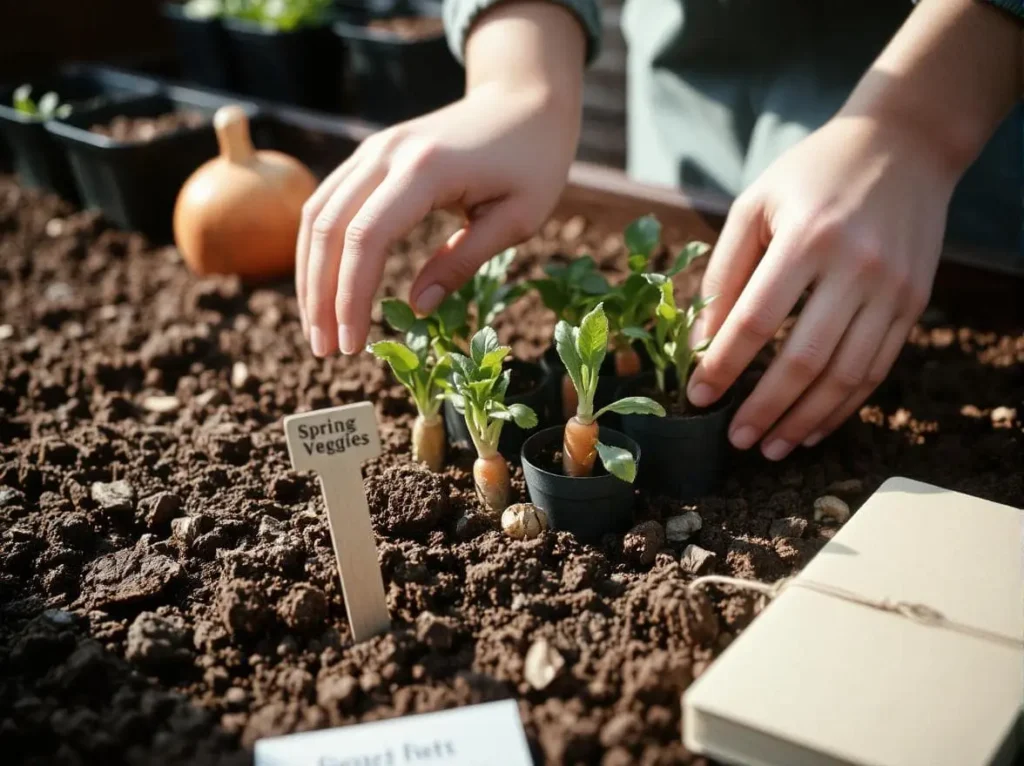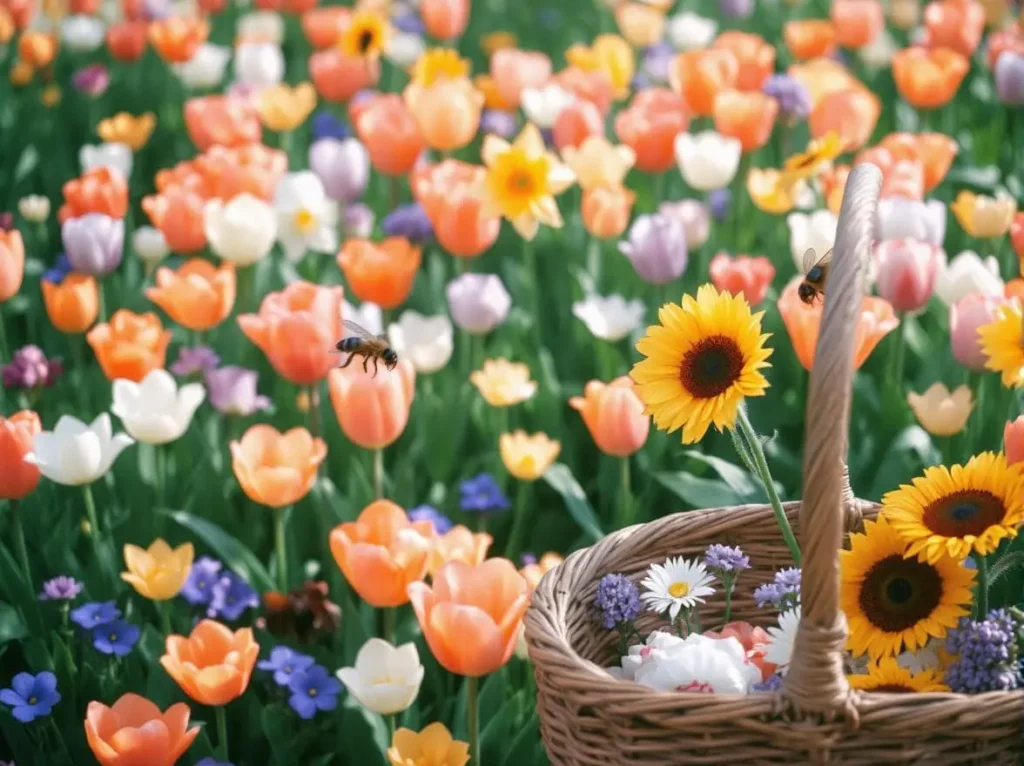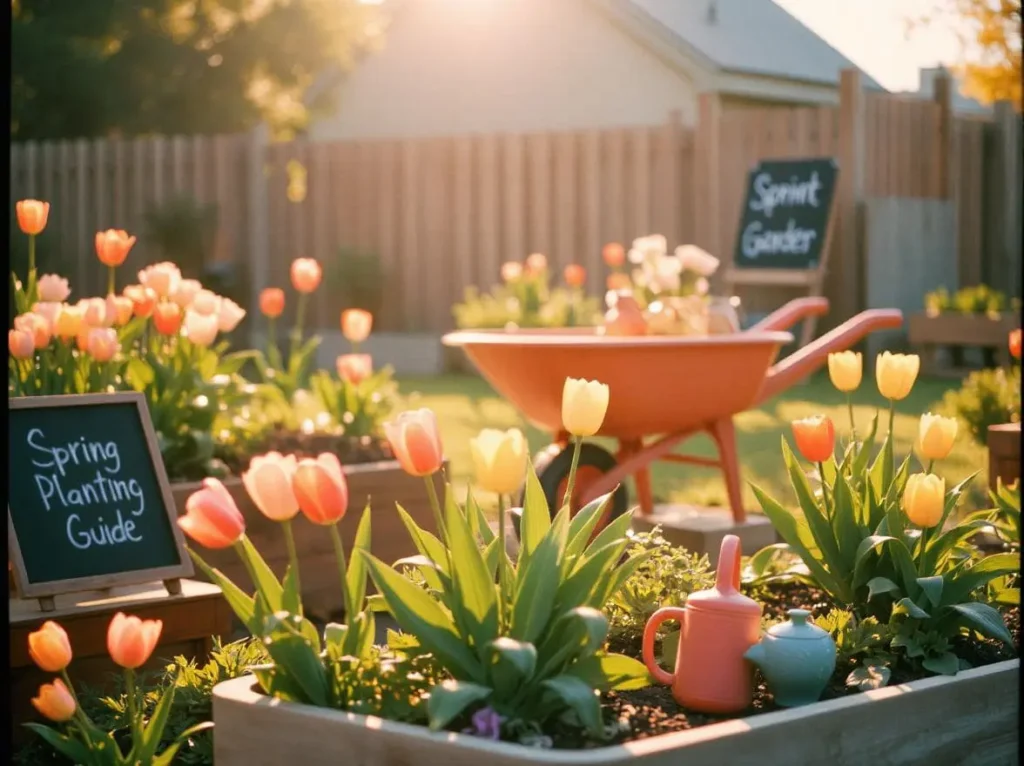Spring is a season of renewal, and for gardeners, it’s the perfect time to dig into the soil and start growing. Whether you’re a first-time gardener or a seasoned green thumb, knowing what to plant in spring can set you up for a thriving, vibrant garden. This guide covers the best vegetables, herbs, flowers, and fruits to sow during this season, along with pro tips to ensure success. Let’s get growing!
Why Spring is the Perfect Time to Plant
Spring’s mild temperatures and longer daylight hours create ideal conditions for seeds to germinate and young plants to establish roots. The soil is warming up, and frost risks diminish (depending on your zone), making it safe to grow a variety of crops and blooms. By planting in spring, you’ll enjoy fresh produce by summer and flowers that last well into fall.
What to Plant in Spring: A Category-by-Category Guide
1. Vegetables to Plant in Spring
These cool-weather and early-summer veggies thrive when planted in spring:
- Leafy Greens: Spinach, kale, lettuce, and arugula. Plant as soon as soil is workable.
- Root Vegetables: Carrots, radishes, beets, and turnips. Sow seeds directly in well-draining soil.
- Peas & Beans: Snap peas, snow peas, and bush beans. Install trellises for climbing varieties.
- Brassicas: Broccoli, cauliflower, and cabbage. Start indoors 4–6 weeks before the last frost.
- Alliums: Onions, garlic (plant cloves), and scallions. Prefers full sun and fertile soil.
- Summer Staples: Tomatoes, peppers, and cucumbers. Start indoors early or transplant after frost.
Pro Tip: Use row covers to protect tender seedlings from unexpected late frosts.

2. Herbs to Grow in Spring
Fresh herbs elevate meals and are easy to grow:
- Cold-Hardy Herbs: Parsley, cilantro, chives, and dill. Sow seeds directly outdoors.
- Tender Herbs: Basil, mint, and oregano. Start indoors or wait until after the last frost.
- Perennial Favorites: Thyme, sage, and rosemary. Plant in well-draining soil; thrives in pots.
Pro Tip: Pinch back herbs regularly to encourage bushier growth and prevent bolting.
3. Flowers to Brighten Your Spring Garden
Add color and attract pollinators with these blooms:
- Annuals: Pansies, marigolds, and zinnias. Plant after frost for summer-long color.
- Perennials: Peonies, daylilies, and lupines. Divide and transplant existing perennials in early spring.
- Bulbs: Dahlias, gladiolus, and lilies. Plant when soil reaches 55–60°F.
- Wildflowers: Sunflowers, cosmos, and poppies. Scatter seeds for a low-maintenance meadow look.
Pro Tip: Mix in companion plants like marigolds to naturally deter pests from veggies.

4. Fruits for Spring Planting
Start these fruiting plants now for sweet rewards later:
- Berries: Strawberries, raspberries, and blueberries. Plant bare-root stock in early spring.
- Fruit Trees: Apples, cherries, and peaches. Choose dwarf varieties for small spaces.
- Vines: Grapes and kiwi. Ensure sturdy trellises for support.
Pro Tip: Mulch around fruit plants to retain moisture and suppress weeds.

Regional Considerations
Tailor your planting to your climate:
- Cool Zones (3–5): Focus on cold-hardy crops like kale, peas, and pansies. Wait until late spring for tomatoes.
- Temperate Zones (6–8): Plant a mix of cool and warm-season crops. Start succession planting for staggered harvests.
- Warm Zones (9–10): Opt for heat-tolerant veggies like okra and sweet potatoes. Protect tender plants from early heatwaves.
Check Your Frost Dates: Use the USDA Plant Hardiness Zone Map to time planting perfectly.
5 Spring Gardening Tips for Success
- Prep Your Soil: Amend with compost or aged manure for nutrient-rich beds.
- Water Wisely: Water deeply in the morning to avoid evaporation and fungal issues.
- Rotate Crops: Prevent soil depletion by rotating plant families yearly.
- Start Small: Overwhelmed? Prioritize 3–5 easy crops like lettuce, radishes, and herbs.
- Monitor Pests: Use organic solutions like neem oil or hand-pick pests early.
Frequently Asked Questions
When exactly should I start planting in spring?
After your region’s last frost date. Check local extensin services for precise timing.
Can I grow vegetables in containers?
Absolutely! Use pots with drainage holes and quality potting mix for tomatoes, herbs, or dwarf fruit trees.
What if my plants fail?
Gardening is a learning process. Adjust watering, sunlight, or soil pH and try again!
Final Thoughts
Spring gardening is an investment in joy, health, and connection to nature. By choosing the right plants for your zone and following these tips, you’ll cultivate a garden that’s both productive and beautiful. Remember, every seasoned gardener started with their first seed—so grab your trowel and embrace the journey!
Happy Planting! 🌱
Loved this guide? Share your spring garden photos with us on social media using #SpringGardenStarter! Need more tips? Subscribe for weekly gardening hacks straight to your inbox.



Pingback: Essential Gardening Tools Every New Gardener Needs - gardendiyhaven.com
Pingback: Container Gardening for Apartments 2025: Your Ultimate Guide to Green Living in Small Spaces - gardendiyhaven.com